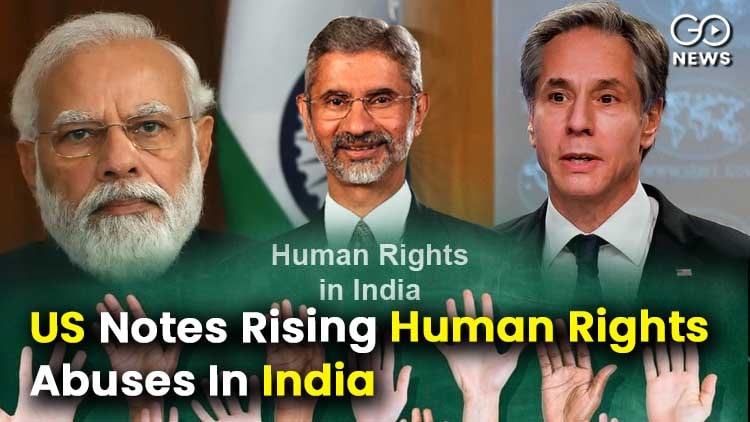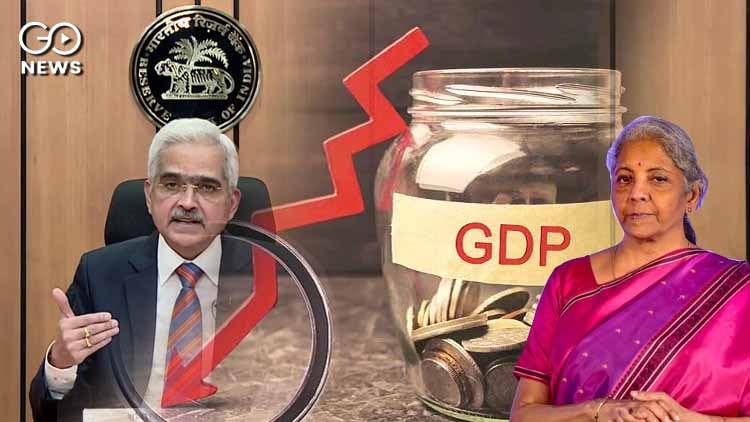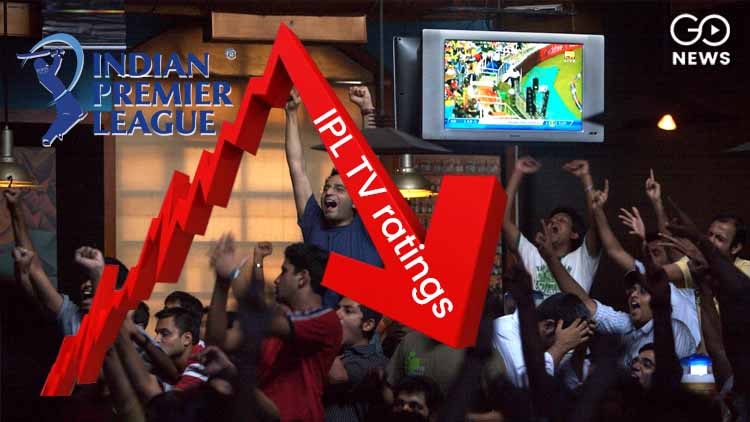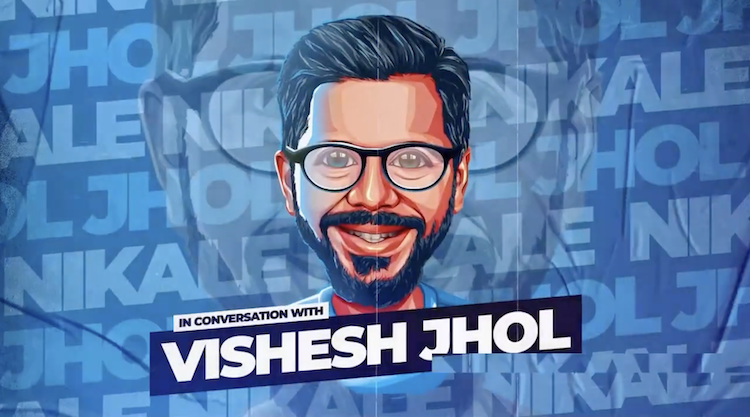Fake News Pandemic Continues: PM Faked ON NYT Front Page
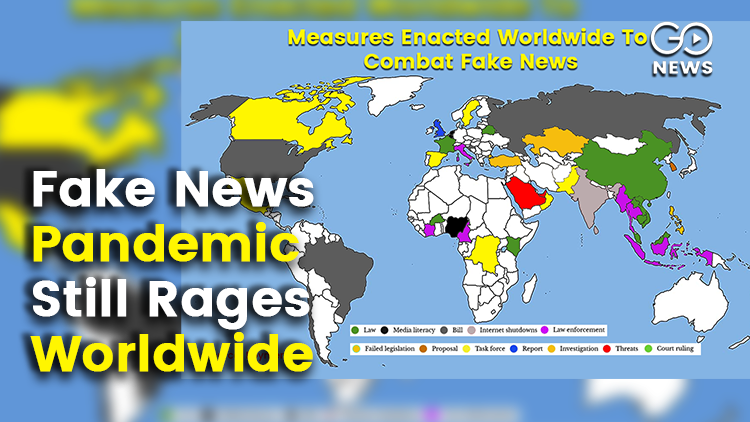
Digital Fakes For Gaining Clout, Spreading Narratives
Recently, there was a morphed image circulating online which purported to show Narendra Modi, the Indian prime minister, on the front page of the New York times with the headline “Last, Best Hope Of Earth” and the subtitle “World’s Most Beloved Leader Is Hdre To Bless Us”. The publication subsequently denied it as inauthentic.
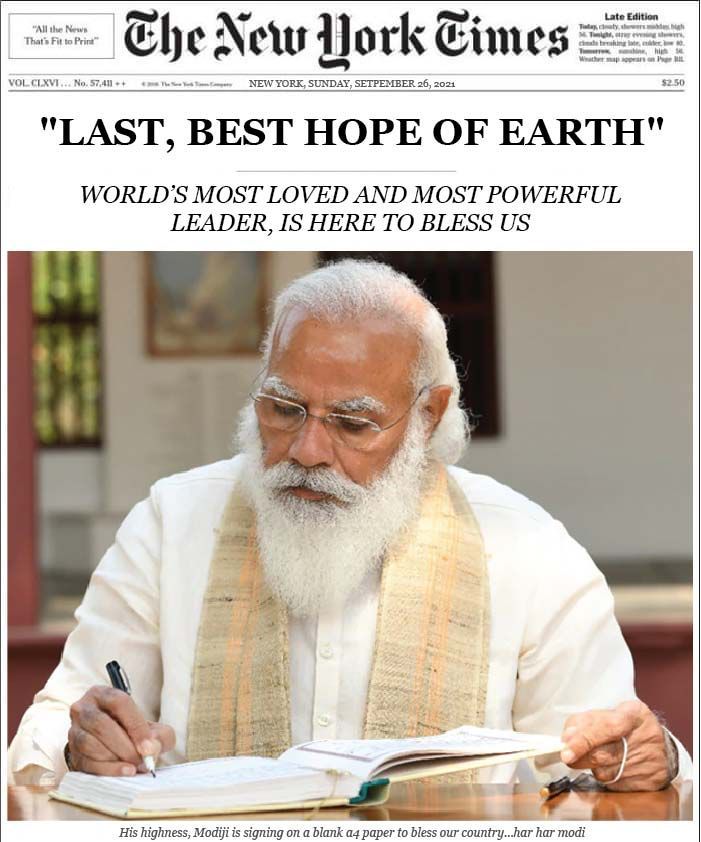 The Fake Image Of Modi On The New York Times Front Page That Went Viral
Similarly, the Indian Express’ Hindi publication Jansatta also tweeted a rebuttal of a fake image doing the rounds on social media, in which Bollywood actor Sharukh Khan is falsely quoted attributing his success to Muslims only, and saying that Muslims only watch films made by the “Khans”.
The Fake Image Of Modi On The New York Times Front Page That Went Viral
Similarly, the Indian Express’ Hindi publication Jansatta also tweeted a rebuttal of a fake image doing the rounds on social media, in which Bollywood actor Sharukh Khan is falsely quoted attributing his success to Muslims only, and saying that Muslims only watch films made by the “Khans”.
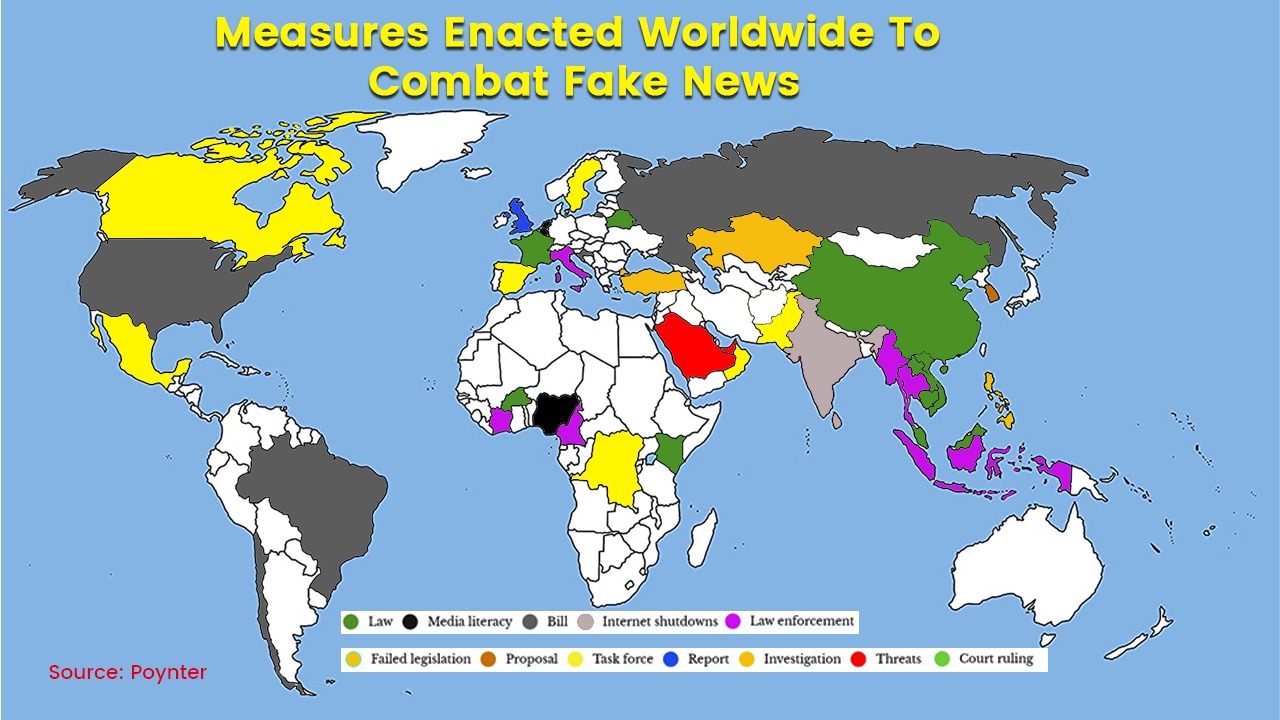 After the violence and rioting witnessed in Delhi in 2020 as part of the anti-CAA protests and unrest, the Delhi Assembly constituted a Committee on Peace and Harmony in March 2020. It recognized the spread of fake news and hostile rumours as a factor in inflaming violence.
"We will apprise the people that if anyone shares fake news, hate content or a rumour, which can cause enmity between two communities, then it is a criminal offence which can invite a jail term of three years. We will seek complaints from people through the campaign in radio, newspapers and other media platforms”, the committee had said.
After the violence and rioting witnessed in Delhi in 2020 as part of the anti-CAA protests and unrest, the Delhi Assembly constituted a Committee on Peace and Harmony in March 2020. It recognized the spread of fake news and hostile rumours as a factor in inflaming violence.
"We will apprise the people that if anyone shares fake news, hate content or a rumour, which can cause enmity between two communities, then it is a criminal offence which can invite a jail term of three years. We will seek complaints from people through the campaign in radio, newspapers and other media platforms”, the committee had said.
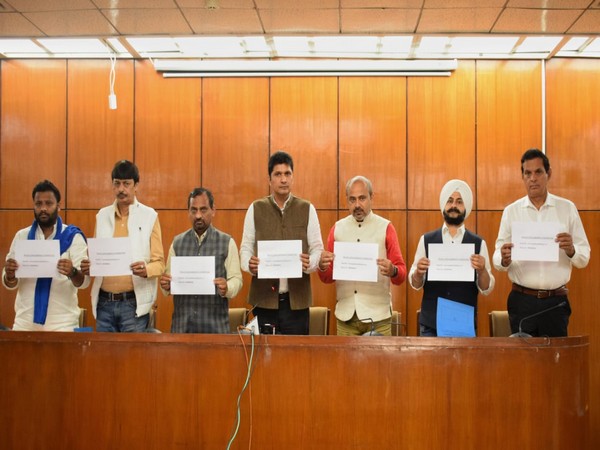 It further sought to incentivize people to report such activities with a reward of ₹10,000 if an FIR was registered on their complaint. The cyber cell of the Kolkata Police and West Bengal Police made 30 arrests for spreading fake news in April 2020, according to Hindustan Times. They were booked under Disaster Management Act (DMA), 2005, and Section 505 (1) (b) of the Indian Penal Code (Statements conducing to public mischief).
Fake News Regulation: Good Or Bad?
The International Press Institute (IPI) in a detailed piece on global measures to tackle misinformation during the pandemic, maintains that such measures are “intensifying global media freedom challenges”.
It further sought to incentivize people to report such activities with a reward of ₹10,000 if an FIR was registered on their complaint. The cyber cell of the Kolkata Police and West Bengal Police made 30 arrests for spreading fake news in April 2020, according to Hindustan Times. They were booked under Disaster Management Act (DMA), 2005, and Section 505 (1) (b) of the Indian Penal Code (Statements conducing to public mischief).
Fake News Regulation: Good Or Bad?
The International Press Institute (IPI) in a detailed piece on global measures to tackle misinformation during the pandemic, maintains that such measures are “intensifying global media freedom challenges”.
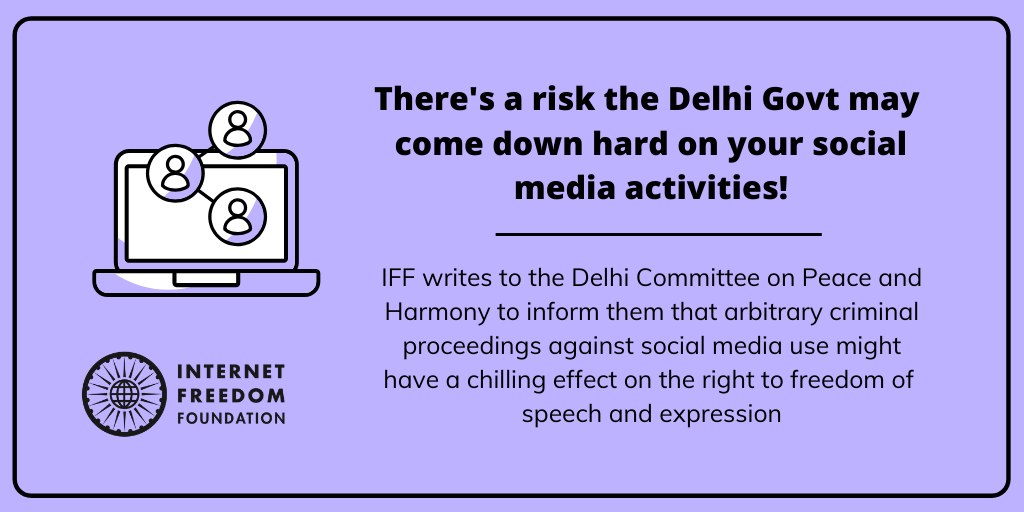 Graphic Released BY The Internet Freedom Foundation After Delhi Government's Anti-Hate Speech Campaign
IPI Deputy Director Scott Griffen “Disinformation poses a serious challenge to open societies, and the coronavirus pandemic has shown just how dangerous online falsehoods and conspiracy theories can be,” he said. “But while combating online disinformation is a legitimate objective in general, handing governments and state-controlled regulators the power to decide what information is true and what is false is a dangerously wrong path”.
Graphic Released BY The Internet Freedom Foundation After Delhi Government's Anti-Hate Speech Campaign
IPI Deputy Director Scott Griffen “Disinformation poses a serious challenge to open societies, and the coronavirus pandemic has shown just how dangerous online falsehoods and conspiracy theories can be,” he said. “But while combating online disinformation is a legitimate objective in general, handing governments and state-controlled regulators the power to decide what information is true and what is false is a dangerously wrong path”.
.jpeg) Internet video sharing giant YouTube has also announced a ban on coronavirus misinformation. It has taken steps to ban all anti-vaccine misinformation on its platform. The topic of vaccinations had a noticeable, though not large, political traction in the United States and other Western countries. After the pandemic and the crises of inoculation, they havereceived a further boost, with many people actively seeking information on vaccines and their effects. As of yet, YouTube has removed 13,000 such videos and will continue doing the same.
Internet video sharing giant YouTube has also announced a ban on coronavirus misinformation. It has taken steps to ban all anti-vaccine misinformation on its platform. The topic of vaccinations had a noticeable, though not large, political traction in the United States and other Western countries. After the pandemic and the crises of inoculation, they havereceived a further boost, with many people actively seeking information on vaccines and their effects. As of yet, YouTube has removed 13,000 such videos and will continue doing the same.
 The Fake Image Of Modi On The New York Times Front Page That Went Viral
Similarly, the Indian Express’ Hindi publication Jansatta also tweeted a rebuttal of a fake image doing the rounds on social media, in which Bollywood actor Sharukh Khan is falsely quoted attributing his success to Muslims only, and saying that Muslims only watch films made by the “Khans”.
The Fake Image Of Modi On The New York Times Front Page That Went Viral
Similarly, the Indian Express’ Hindi publication Jansatta also tweeted a rebuttal of a fake image doing the rounds on social media, in which Bollywood actor Sharukh Khan is falsely quoted attributing his success to Muslims only, and saying that Muslims only watch films made by the “Khans”.
Fake news has caused immense damage to lives and communities in India. Whatsapp, Twitter, and Facebook have emerged as top spaces where misinformation is easily spread and disseminated to millions within seconds. A few memorable examples of fake news stories that went viral on social media are:ये जनसत्ता के नाम से कुछ लोग सोशल मीडिया पर शेयर कर रहे हैं, पर बता दें कि यह पूरी तरह फर्जी है। ऐसी कोई खबर जनसत्ता पर नहीं लगी है। pic.twitter.com/CvzCKYAtFC
— Jansatta (@Jansatta) September 29, 2021
- Nano chips in ₹2000 notes (2016)
- Muzzafarnagar riots 2013
- Child kidnapping rumours in rural Jharkhand leading to lynchings
- UNESCO says ‘Jana Gana Mana’ is the best national anthem
- Elphinstone Bridge Stampede: dying woman molested
- Section 54 of the Disaster Management Act
- Section 66D of Information Technology Act
- Section 153 of Indian Penal Code (provoking riots)
- Section 499 and 500 of Indian Penal Code (defamation)
- Section 505 (1)(b)
- Approaching NBA, IBF, BCCC
 After the violence and rioting witnessed in Delhi in 2020 as part of the anti-CAA protests and unrest, the Delhi Assembly constituted a Committee on Peace and Harmony in March 2020. It recognized the spread of fake news and hostile rumours as a factor in inflaming violence.
"We will apprise the people that if anyone shares fake news, hate content or a rumour, which can cause enmity between two communities, then it is a criminal offence which can invite a jail term of three years. We will seek complaints from people through the campaign in radio, newspapers and other media platforms”, the committee had said.
After the violence and rioting witnessed in Delhi in 2020 as part of the anti-CAA protests and unrest, the Delhi Assembly constituted a Committee on Peace and Harmony in March 2020. It recognized the spread of fake news and hostile rumours as a factor in inflaming violence.
"We will apprise the people that if anyone shares fake news, hate content or a rumour, which can cause enmity between two communities, then it is a criminal offence which can invite a jail term of three years. We will seek complaints from people through the campaign in radio, newspapers and other media platforms”, the committee had said.
 It further sought to incentivize people to report such activities with a reward of ₹10,000 if an FIR was registered on their complaint. The cyber cell of the Kolkata Police and West Bengal Police made 30 arrests for spreading fake news in April 2020, according to Hindustan Times. They were booked under Disaster Management Act (DMA), 2005, and Section 505 (1) (b) of the Indian Penal Code (Statements conducing to public mischief).
Fake News Regulation: Good Or Bad?
The International Press Institute (IPI) in a detailed piece on global measures to tackle misinformation during the pandemic, maintains that such measures are “intensifying global media freedom challenges”.
It further sought to incentivize people to report such activities with a reward of ₹10,000 if an FIR was registered on their complaint. The cyber cell of the Kolkata Police and West Bengal Police made 30 arrests for spreading fake news in April 2020, according to Hindustan Times. They were booked under Disaster Management Act (DMA), 2005, and Section 505 (1) (b) of the Indian Penal Code (Statements conducing to public mischief).
Fake News Regulation: Good Or Bad?
The International Press Institute (IPI) in a detailed piece on global measures to tackle misinformation during the pandemic, maintains that such measures are “intensifying global media freedom challenges”.
 Graphic Released BY The Internet Freedom Foundation After Delhi Government's Anti-Hate Speech Campaign
IPI Deputy Director Scott Griffen “Disinformation poses a serious challenge to open societies, and the coronavirus pandemic has shown just how dangerous online falsehoods and conspiracy theories can be,” he said. “But while combating online disinformation is a legitimate objective in general, handing governments and state-controlled regulators the power to decide what information is true and what is false is a dangerously wrong path”.
Graphic Released BY The Internet Freedom Foundation After Delhi Government's Anti-Hate Speech Campaign
IPI Deputy Director Scott Griffen “Disinformation poses a serious challenge to open societies, and the coronavirus pandemic has shown just how dangerous online falsehoods and conspiracy theories can be,” he said. “But while combating online disinformation is a legitimate objective in general, handing governments and state-controlled regulators the power to decide what information is true and what is false is a dangerously wrong path”.
.jpeg) Internet video sharing giant YouTube has also announced a ban on coronavirus misinformation. It has taken steps to ban all anti-vaccine misinformation on its platform. The topic of vaccinations had a noticeable, though not large, political traction in the United States and other Western countries. After the pandemic and the crises of inoculation, they havereceived a further boost, with many people actively seeking information on vaccines and their effects. As of yet, YouTube has removed 13,000 such videos and will continue doing the same.
Internet video sharing giant YouTube has also announced a ban on coronavirus misinformation. It has taken steps to ban all anti-vaccine misinformation on its platform. The topic of vaccinations had a noticeable, though not large, political traction in the United States and other Western countries. After the pandemic and the crises of inoculation, they havereceived a further boost, with many people actively seeking information on vaccines and their effects. As of yet, YouTube has removed 13,000 such videos and will continue doing the same.
Latest Videos








